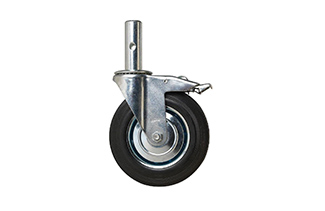
ADTO News
Factors to Consider When Selecting Scaffold Caster Wheel Size
When it comes to scaffolding, safety and efficiency are paramount. One of the most critical components that contribute to both is the caster wheel size. Choosing the right scaffold caster wheels can enhance mobility, stability, and overall performance of your scaffold system. Here are the key factors to consider when selecting the appropriate caster wheel size.

1. Load Capacity
The first factor to consider is the load capacity of the caster wheels. Different scaffolding projects will have varying weight requirements based on the materials and equipment being used. Ensure the caster wheels you select can support the maximum load of your scaffold system without compromising safety. A wheel that is too small may lead to instability and potential accidents.
2. Surface Conditions
Consider the surfaces on which the scaffolding will be used. Will it be on smooth concrete, uneven terrain, or gravel? Larger wheels are typically better suited for rough or uneven surfaces, providing greater stability and easier maneuverability. Conversely, smaller wheels may be more effective on smooth surfaces but can struggle with obstacles.
3. Wheel Material
The material of the caster wheel plays a significant role in its performance. Common materials include rubber, polyurethane, and metal. Rubber wheels offer excellent shock absorption and are ideal for indoor use, while polyurethane wheels provide durability and resistance to wear, making them suitable for outdoor projects. Metal wheels are best for heavy-duty applications. Choose a material that aligns with your project’s specific needs.
4. Height of the Scaffold
The height of your scaffold will also influence the size of the caster wheels you select. Taller scaffolds require larger wheels for improved stability and balance. Larger wheels can help lower the center of gravity, reducing the risk of tipping. Ensure that the wheel size is proportional to the height of the scaffold for maximum safety.
5. Mobility and Maneuverability
Consider how often and how easily you will need to move the scaffold. Larger wheels can make maneuvering easier, especially over rough terrain or obstacles. If your project requires frequent repositioning, investing in larger, more mobile caster wheels will enhance efficiency and reduce worker fatigue.
6. Regulatory Compliance
Lastly, ensure that the caster wheels you select meet relevant safety standards and regulations. Compliance with industry standards is essential for maintaining safety on the job site. Always check for certifications and specifications to ensure your scaffold caster wheels are reliable and safe for use.
Conclusion
Selecting the right scaffold caster wheel size is crucial for ensuring safety, stability, and efficiency in your scaffolding projects. By considering load capacity, surface conditions, wheel material, scaffold height, mobility, and regulatory compliance, you can make an informed decision that enhances your work environment.
If you’re looking for high-quality scaffold caster wheels tailored to your specific needs, contact us today for expert advice and competitive pricing. Let us help you elevate your scaffolding projects to new heights!


 Live Chat
Live Chat
